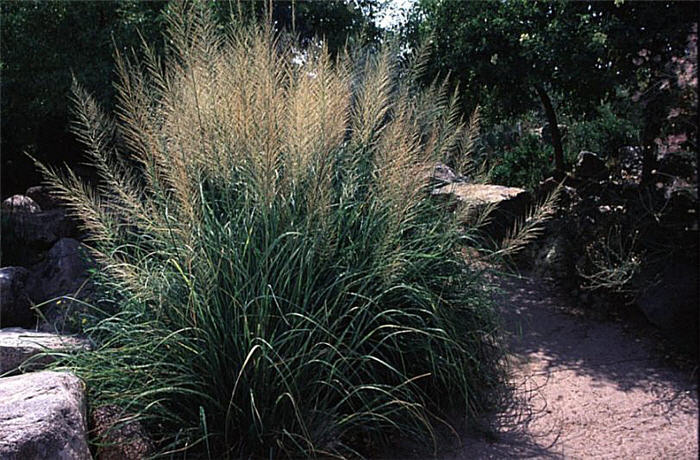| Botanical Name: Sporobolus wrightii | |
| Common Name: Giant Dropseed or Sacaton |

-
Anatomy
-
Culture
-
Design
Plant Type
Perennial, Grass
Height Range
6-12'
Flower Color
Pink
Flower Season
Summer, Fall
Leaf Color
Green, Blue Green, Grey Green
Bark Color
n/a
Fruit Color
n/a
Fruit Season
n/a
Sun
Full, Half
Water
Very Low, Low
Growth Rate
Fast, Moderate
Soil Type
Sandy, Clay, Loam, Rocky, Unparticular
Soil Condition
Average, Poor, Well-drained, Dry
Soil pH
Neutral, Basic
Adverse Factors
n/a
Design Styles
English Cottage, Formal, Japanese, Meadow, Mediterranean, Ranch, Spanish, Native Garden, Woodland
Accenting Features
Showy Flowers, Silhouette, Specimen
Seasonal Interest
Winter, Summer, Fall
Location Uses
Background, Shrub Border, Foundation, Walls / Fences
Special Uses
Cut Flowers, Erosion Control, Hedge, Screen, Mass Planting, Naturalizing
Attracts Wildlife
n/a
Information by: Stephanie Duer
Photographer: Mountain States Nursery
Photographer: Mountain States Nursery
-
Description
-
Notes
Giant dropseed is both taller and wider than most other dropseeds, reaching 6 to 8 feet tall and wide. It has an upward arching and mounding habit. Grey to blue-green foliage is narrow, giving it a fine texture; foliage turns yellow in fall and then beige. Pinkish flowers are tall and large, and are present Aug thru Oct. The overall effect is very architectural and striking. Stunning cut flowers.
Grows in full sun to bright shade in any well drained soil. Tolerant of dry, alkaline, sandy, or clay soils. Drought, salt, and high pH tolerant. Good for erosion control as it is deep rooted. Hardy to about -30f. Cut back in late winter; see Guides.